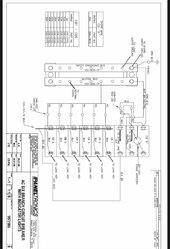timselectric
If I can do it, you can do it.
- Joined
- Feb 5, 2022
- Messages
- 18,619
Incorrect.Until the inverter is tested with all wires disconnected from AC input and AC output for continuity between N-G with the inverter off, there is no clear answer.
You can take voltage readings with the system running, to verify if a bond exists.
If a bond is present, you can't tell where it's coming from unless you disconnect everything.
But, because we know that there's no bond present. No further testing is needed.
For the OP, we are already passed this part. And now we just need to create a bond in the proper way.




